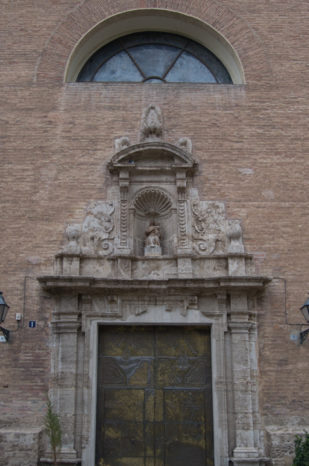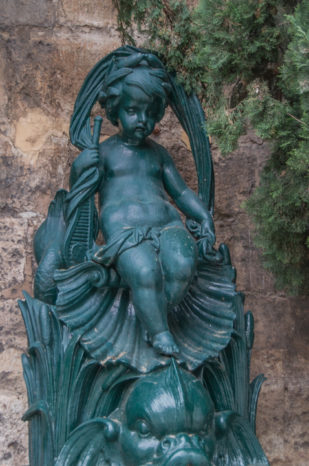Santa Maria del Mar
The origin of the church dates back to the first moments of the reconquest by King James I the Conqueror. Therefore, it is the first temple of creation close to this historical landmark and was probably Romanesque of the type of reconquest. This temple is mentioned in historical documents from 1333 and 1392, already with the name of Church of Santa María del Mar of the city of Valencia “The Church of Santa María del Mar of the city of Valencia”. From the description of this ancient temple, we have evidence by a graphic document from 1563, in which the Flemish painter Anthoine Van den Wijngaerde shows the aspect of the Grao de Valencia and among the houses you can see the church. From the few data we have, it can be inferred that it was a single-nave temple 25 meters long by 18 meters wide and that it had a flat belfry located at the foot of the church.
In 1411 the miraculous event occurred of the arrival by sea of the image called after Christ of the Grao, so devotion to this image increased, which would force over time to expand the original temple and build a chapel dedicated to Christ.
According to tradition, the Cristo del Grao, popularly known as the Negret, arrived by rubbing the sea tied to a ladder.
In the seventeenth century the construction of the new temple was agreed. The works began on August 2, 1683 by the masthead, being the master builder Don Francisco Martí. The temple grows longitudinally, not in terms of width, since it is limited by the Chapel of Christ.
Between 1683 and 1689 the stonemason Antonio Borrés finished the bell tower, which was not yet finished. Baroque in style, the finish was destroyed in the Spanish Civil War (1936-1939) as the bell tower was used as a defense tower.
The names of the bells are: Pilarica (1955), San Vicente Ferrer (1940), San José (1995), Santísimo Cristo (1940) and Santa Maria (1940).
The current church has a quadrangular floor plan and a single nave with a half-barrel vault with lunettes, side chapels between the buttresses and equipped with a transept not excellent in plan. Of interest is the fact that an incipient communication between chapels appears in it. It has a chapel in the transept, transept with width of 2 chapels, presbytery, and chapel of Christ located on the north side of the transept topped with camarín.
The central dome of the transept is covered with blue enamelled tile, characteristic seal of Valencian temples of the seventeenth century. The works were completed in 1736. In 1858 a clock was placed in the bell tower. Both the nave and the Christ Chapel have undergone various reforms at all times, especially after the War of Independence (1808) and the Spanish Civil War (1936).
It has two late Baroque doorways, the lateral one is formed by two bodies, the lower one houses the lintel door and in the second section a niche houses a cross on a staircase, which alludes to the arrival of Christ of the Grao. The main façade located at the foot of the church bears some similarity to the open one in the transept, however in the niche of the upper body we can see an image of Our Lady of Light, made in 1943.
Outside the temple, a stone plaque above the outer fountain reads: Aguas del Turia pours out this fountain for the efforts of the municipality of Valencia. The cooperation of that of this town and the legacy of 80,000 reais of Don Dionisio Bello. May 3, 1859
Another plaque placed in 1999 reads: 750th Anniversary. King James I, the conqueror, granted the place, and tenants of the current GRAU, the name of Ville Nove Maris Valentiae and numerous privileges on May 27, 1249. 1249-1999.


Dades bàsiques
Plaza del Tribunal de les Aigües, 1
46011 Valencia